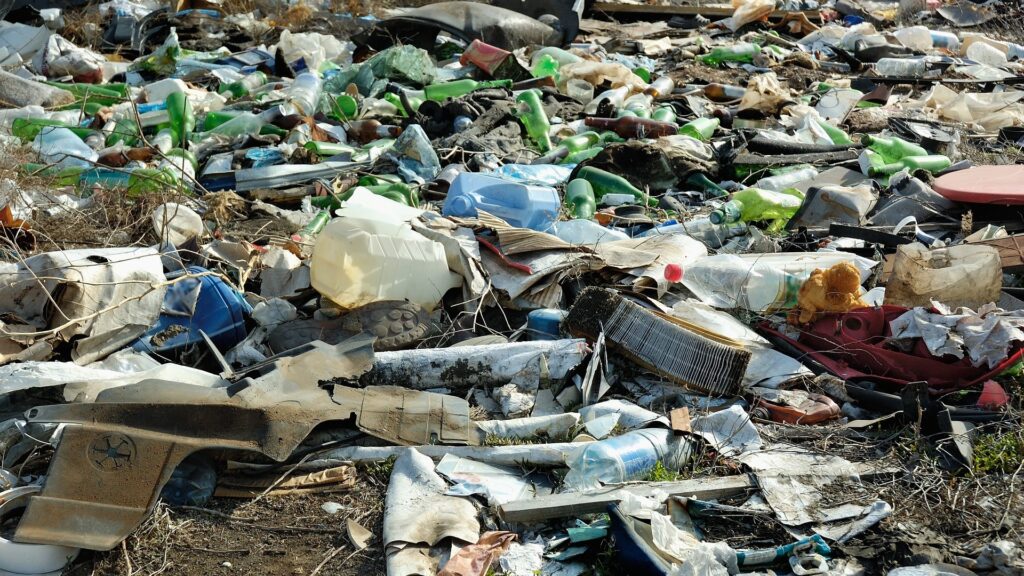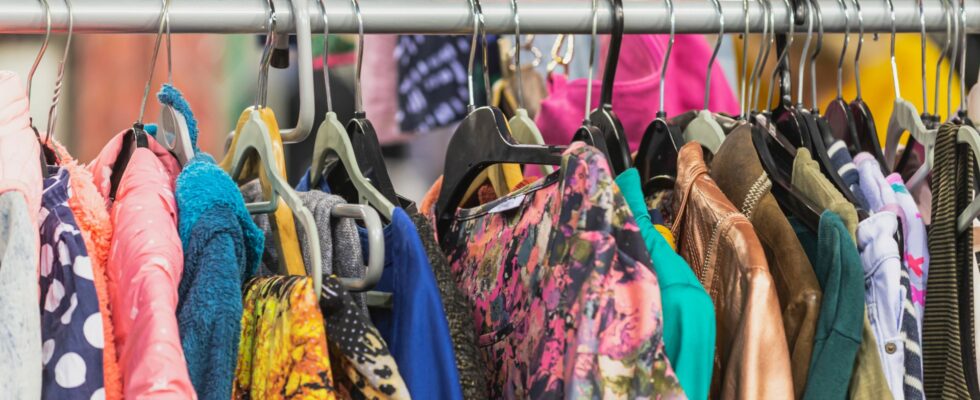While vintage stores are popping up almost everywhere in cities, we must nevertheless avoid reproducing the flaws of overconsumptionunder the guise of second-hand fashion.
In the wardrobe, a jacket and a shirt are lying around. Clothes that are too small or out of fashion and waiting for a second life. To prevent them from ending up in a landfill, some people choose to resell them – on the Vinted application for example – and others to give them away. A way to revalorize your once-loved fabrics, while clearing your conscience.
To date, 42% of French women buy their clothes second-hand, according to a study carried out by the French Fashion Institute. This trend, which is starting to take root in our habits, is also shaping cities with new stores.
Fast fashion and neoliberalism
“ Near my house, in less than six months, three thrift stores opened on the same street “, underlines Amandine, 35 years old, “ including one which replaced a neighborhood grocery store. Budget-wise it’s cheaper than buying new but they’re not necessarily very quality clothes “.
“The ecological aspect is not the priority of these platforms. »
In fact, although fast fashion consumes a lot of resources and generates significant waste, purchasing second-hand clothing is not, however, a flawless ecological solution.
“ This neoliberal economy aims to transform one’s wardrobe into a livelihood », recognizes the researcher in management sciences at the University of Lille, Elodie Juge. “ The ecological aspect is not the priority of these platforms. »

We find many fast fashion items in thrift stores, whose carbon footprint is not ideal. For example, the polyester very present in fast fashion t-shirts is a petroleum derivative. It is therefore not possible to recycle it and if it is not reused, it ends up being burned. We also know that a large part of the microplastic found in the Arctic comes from our clothes, particularly during washing.
Take into account the carbon footprint of transport
Moreover, ” on online resale platforms like Vinted, some items are sent from abroad », Underlines Clémentine Mossé, director and founder of The Grenner Good, a Lyon association which promotes eco-responsible lifestyles. “ To transport which generates CO2, we must also add packaging which generates waste. »
Therefore, to buy second hand and be in an ecological logic, it is better to favor purchases close to home, or online sales with personal delivery. It may also be interesting to look at the quality of the clothing. “ At the cheapest thrift store that opened near my house, the store receives huge bags of clothes in the morning », adds Amandine. “ And in the bins, I sometimes find clothes with holes in them. »
Clémentine Mossé recommends looking closely at the seams, the brand and the materials. “ There are also committed thrift stores that will put good quality clothing on the shelves with labels that guarantee provenance. », continues this activist.


Change your consumption habits
To make second-hand purchasing more in line with ecological principles, it is also important to question one’s consumption habits. In France, only 32% of the clothes in our wardrobes are worn, according to a Novethic study. The rest would collect dust in our cupboards.
“This maintains overconsumption and does not allow for ecological logic. »
“ Vinted can also be used as a way to relieve guilt », continues Clémentine Mossé. “ We tell ourselves that it’s not so bad if we buy a lot of clothes because they are clothes that have already been worn. This maintains overconsumption and does not allow for ecological logic. »
Therefore, if you wish to make your purchases part of an approach that limits the impact on the environment, it may be interesting to question the reasons for this purchase.
Will I use this item of clothing? Is it a purchasing impulse? Is it something I will wear several times or only for a special event? All of these questions can help you avoid buying clothes that won’t be worn.
And for the children?
Another point for second-hand clothing: gifts given, especially to children. There are specialized thrift stores which allow you to buy second hand, and associations like La Croix Rouge, which have stocks at lower prices.
This helps limit the ecological impact of new clothes that will only be worn for a few weeks. “ When my son was bornexplains Hassan, 43, we received so many clothes as gifts from our loved ones that for almost a year we didn’t need to buy anything. And some outfits we didn’t even have time to make him wear, we had too many and he grew up. »
Finally, there are also children’s clothing subscription systems. Allow between 3 and 10 euros for a pair of pants per month. But here again, transport and packaging should be added to the ecological impact.


Subscribe to Numerama on Google News so you don’t miss any news!
